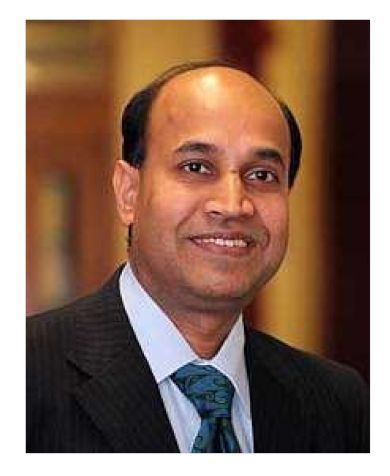Wearable Sensors and Systems in the IoT
Funding
Acknowledgments
Conflicts of Interest
References
- Vailshery, L.S. Global IoT End-User Spending Worldwide 2017–2025. Available online: https://www.statista.com/statistics/976313/global-iot-market-size/ (accessed on 17 November 2021).
- Telugunta, R.; Choudhary, S. Internet of Things in Healthcare Market. Available online: https://www.alliedmarketresearch.com/iot-healthcare-market (accessed on 17 November 2021).
- Mukhopadhyay, S.C. Wearable Sensors for Human Activity Monitoring: A Review. IEEE Sens. J. 2015, 15, 1321–1330. [Google Scholar] [CrossRef]
- Haghi, M.; Neubert, S.; Geissler, A.; Fleischer, H.; Thurow, K. A Flexible and Pervasive IoT-Based Healthcare Platform for Physiological and Environmental Parameters Monitoring. IEEE Internet Things J. 2020, 7, 5628–5647. [Google Scholar] [CrossRef]
- Saadeh, W.; Butt, S.A.; Altaf, M.A.B. A Patient-Specific Single Sensor IoT-Based Wearable Fall Prediction and Detection System. IEEE Trans. Neural Syst. Rehabil. Eng. 2019, 27, 995–1003. [Google Scholar] [CrossRef]
- Prabhu, S.N.; Gooneratne, C.P.; Hoang, K.A.; Mukhopadhyay, S.C. IoT-Associated Impedimetric Biosensing for Point-of-Care Monitoring of Kidney Health. IEEE Sens. J. 2021, 21, 14320–14329. [Google Scholar] [CrossRef]
- Malhi, K.; Mukhopadhyay, S.C.; Schnepper, J.; Haefke, M.; Ewald, H. A Zigbee-Based Wearable Physiological Parameters Monitoring System. IEEE Sens. J. 2012, 12, 423–430. [Google Scholar] [CrossRef]
- Suryadevara, N.K.; Mukhopadhyay, S.C.; Barrack, L. Towards a Smart Non-Invasive Fluid Loss Measurement System. J. Med. Syst. 2015, 39, 38. [Google Scholar] [CrossRef]
- Quazi, T.; Mukhopadhyay, S.C.; Suryadevara, N.K.; Huang, Y.M. Towards the smart sensors based human emotion recognition. In Proceedings of the 2012 IEEE International Instrumentation and Measurement Technology Conference Proceedings, Graz, Austria, 13–16 May 2012; pp. 2365–2370. [Google Scholar]
- Nag, A.; Afsarimanesh, N.; Feng, S.; Mukhopadhyay, S.C. Strain induced graphite/PDMS sensors for biomedical applications. Sens. Actuators A Phys. 2018, 271, 257–269. [Google Scholar] [CrossRef]
- Quer, G.; Radin, J.M.; Gadaleta, M. Wearable sensor data and self-reported symptoms for COVID-19 detection. Nat. Med. 2021, 27, 73–77. [Google Scholar] [CrossRef]
- Pal, S.; Hitchens, M.; Rabehaja, T.; Mukhopadhyay, S. Security Requirements for the Internet of Things: A Systematic Approach. Sensors 2020, 20, 5897. [Google Scholar] [CrossRef]
- Zheng, G.; Yang, W.; Valli, C.; Qiao, L.; Shankaran, R.; Orgun, M.A. Finger-to-Heart (F2H): Authentication for Wireless Implantable Medical Devices. IEEE J. Biomed. Health Inform. 2018, 23, 1546–1557. [Google Scholar] [CrossRef]
- Spanò, E.; Pascoli, S.D.; Iannaccone, G. Low-Power Wearable ECG Monitoring System for Multiple-Patient Remote Monitoring. IEEE Sens. J. 2016, 16, 5452–5462. [Google Scholar] [CrossRef]
- Payne, N.; Gangwani, R.; Barton, K.; Sample, A.P.; Cain, S.M.; Burke, D.T.; Newman-Casey, P.A.; Shorter, K.A. Medication Adherence and Liquid Level Tracking System for Healthcare Provider Feedback. Sensors 2020, 20, 2435. [Google Scholar] [CrossRef]
- Kumar, S.; Buckley, J.L.; Barton, J.; Pigeon, M.; Newberry, R.; Rodencal, M.; Hajzeraj, A.; Hannon, T.; Rogers, K.; Casey, D.; et al. A Wristwatch-Based Wireless Sensor Platform for IoT Health Monitoring Applications. Sensors 2020, 20, 1675. [Google Scholar] [CrossRef] [Green Version]
- Zhang, H.; Zhang, Z.; Gao, N.; Xiao, Y.; Meng, Z.; Li, Z. Cost-Effective Wearable Indoor Localization and Motion Analysis via the Integration of UWB and IMU. Sensors 2020, 20, 344. [Google Scholar] [CrossRef] [Green Version]
- Lee, J.; Joo, H.; Lee, J.; Chee, Y. Automatic Classification of Squat Posture Using Inertial Sensors: Deep Learning Approach. Sensors 2020, 20, 361. [Google Scholar] [CrossRef] [PubMed] [Green Version]
- Zhang, P.; Chen, Y.; Li, Y.; Zhang, Y.; Zhang, J.; Huang, L. A Flexible Strain Sensor Based on the Porous Structure of a Carbon Black/Carbon Nanotube Conducting Network for Human Motion Detection. Sensors 2020, 20, 1154. [Google Scholar] [CrossRef] [PubMed] [Green Version]
- Lee, D.J.; Kim, D.Y. Hydrophobic Paper-Based SERS Sensor Using Gold Nanoparticles Arranged on Graphene Oxide Flakes. Sensors 2019, 19, 5471. [Google Scholar] [CrossRef] [PubMed] [Green Version]
- Nakamura, Y.; Matsuda, Y.; Arakawa, Y.; Yasumoto, K.; Waistonbelt, X. A Belt-Type Wearable Device with Sensing and Intervention Toward Health Behavior Change. Sensors 2019, 19, 4600. [Google Scholar] [CrossRef] [PubMed] [Green Version]
- Masciadri, A.; Comai, S.; Salice, F. Wellness Assessment of Alzheimer’s Patients in an Instrumented Health-Care Facility. Sensors 2019, 19, 3658. [Google Scholar] [CrossRef] [Green Version]
- Lapinski, M.; Medeiros, C.B.; Scarborough, D.M.; Berkson, E.; Gill, T.J.; Kepple, T.; Paradiso, J.A. A Wide-Range, Wireless Wearable Inertial Motion Sensing System for Capturing Fast Athletic Biomechanics in Overhead Pitching. Sensors 2019, 19, 3637. [Google Scholar] [CrossRef] [Green Version]
- Han, T.; Nag, A.; Simorangkir, R.B.V.B.; Afsarimanesh, N.; Liu, H.; Mukhopadhyay, S.C.; Xu, Y.; Zhadobov, M.; Sauleau, R. Multifunctional Flexible Sensor Based on Laser-Induced Graphene. Sensors 2019, 19, 3477. [Google Scholar] [CrossRef] [PubMed] [Green Version]
- Gómez, M.E.D.C.; Álvarez, H.F.; Valcarce, B.P.; González, C.G.; Olenick, J.; Las-Heras Andrés, F. Zirconia-Based Ultra-Thin Compact Flexible CPW-Fed Slot Antenna for IoT. Sensors 2019, 19, 3134. [Google Scholar] [CrossRef] [PubMed] [Green Version]
- Yang, W.; Wang, S.; Hu, J.; Ibrahim, A.; Zheng, G.; Macedo, M.J.; Johnstone, M.N.; Valli, C. A Cancelable Iris- and Steganography-Based User Authentication System for the Internet of Things. Sensors 2019, 19, 2985. [Google Scholar] [CrossRef] [PubMed] [Green Version]
- Kodama, R.; Terada, T.; Tsukamoto, M. Evaluation on Context Recognition Using Temperature Sensors in the Nostrils. Sensors 2019, 19, 1528. [Google Scholar] [CrossRef] [Green Version]
- Mohamadzade, B.; Hashmi, R.M.; Simorangkir, R.B.V.B.; Gharaei, R.; Rehman, S.U.; Abbasi, Q.H. Recent advances in fabrication methods for flexible antennas in wearable devices: State of the art. Sensors 2019, 19, 2312. [Google Scholar] [CrossRef] [Green Version]
Short Biography of Authors
 | Subhas Chandra Mukhopadhyay (Fellow, IEEE) holds a B.E.E. (gold medallist), M.E.E., Ph.D. (India) and Doctor of Engineering (Japan). He has over 31 years of teaching, industrial, and research experience. Currently, he is working as a Professor of Mechanical/Electronics Engineering at Macquarie University, Australia and is the Discipline Leader of the Mechatronics Engineering Degree Programme. He is also the Director of International Engagement for the School of Engineering of Macquarie University. His research interests include smart sensors and sensing technology, instrumentation techniques, wireless sensors and networks (WSN), Internet of Things (IoT), wearable sensors, medical devices, and healthcare and environmental monitoring. He has supervised over 50 postgraduate students and over 150 Honours students. He has examined over 70 postgraduate theses. He has published over 450 papers in different international journals and conference proceedings, written ten books and fifty-two book chapters, and edited eighteen conference proceedings. He has also edited thirty-five books with Springer-Verlag and thirty-two journal special issues. He has been cited 14601 times and has a h-index of 58 to date. He has received various awards, most notably: the Australian Research Field Leader in Engineering and Computer Science 2020; Distinguished Lecturer, IEEE Sensors Council 2020-2022; Outstanding Volunteer by IEEE R10, 2019; World Famous Professor by Government of Indonesia, 2018; Certificate of Distinction from IEEE Sensors Council, 2017; IETE R.S. Khandpur Award—India, 2016; Best Performing Topical Editor of IEEE Sensors Journal from 2013 to 2018, six years consecutively. He has organized over 20 international conferences as either General Chairs/co-chairs or Technical Programme Chair. He has delivered 397 presentations including keynote, invited, tutorials, and special lectures. He is a Fellow of IEEE (USA), a Fellow of IET (UK), a Fellow of IETE (India), a Topical Editor of IEEE Sensors journal, an associate editor of IEEE Transactions on Instrumentation and Measurements, and IEEE Review of Biomedical Engineering. He is the Editor-in-Chief of the International Journal on Smart Sensing and Intelligent Systems and Springer Nature Computer Science. He is a Distinguished Lecturer of the IEEE Sensors Council from 2017 to 2022. He is the Founding Chair of the IEEE Sensors Council New South Wales Chapter. More details can be available at https://researchers.mq.edu.au/en/persons/subhas-mukhopadhyay https://scholar.google.com.au/citations?hl=en&user=8p-BvWIAAAAJ https://orcid.org/0000-0002-8600-5907 |
 | Nagender Kumar Suryadevara (Senior Member, IEEE) received his Ph.D. degree from the School of Engineering and Advanced Technology, Massey University, New Zealand, in 2014. He is an Associate Professor at the School of Computer and Information Sciences, University of Hyderabad, India. His research interests include Internet of Things, time-series data mining, and ambient assisted living. He has authored three books, edited two books, and published over 50 papers in various international journals, conferences, and book chapters. He has delivered numerous presentations including keynote, tutorials, and special lectures. He is passionate about how to develop great AI based products under the resource constraint computing environments. Google Scholar citations:h-index:20,i10-index:34. https://scholar.google.com/citations?user=S28OdGMAAAAJ&hl=en |
 | Anindya Nag (Member, IEEE) has completed his B. Tech. degree from West Bengal University of Technology, India, in 2013; M.S. degree at Massey University, New Zealand, in 2015; and a Ph.D. degree from Macquarie University, Australia, in 2018. He has worked as a lecturer at Dongguan University of Technology, China, from February 2019 to August 2020. He has also earned postdoctoral fellowships at King Abdullah University of Science and Technology (KAUST), Saudi Arabia, and Shandong University, China. He is currently a junior professor at Technische Universität Dresden, Germany. His research interests include the area of MEMS, flexible sensors, printing technology, and nanotechnology-based smart sensors for health, environmental, and industrial monitoring applications. His paper, “Wearable Flexible Sensors,” has been one of the top 25 downloaded papers in the IEEE Sensor Journal from June 2017–September 2018. Dr. Nag has authored and co-authored over 75 research articles in books, journal articles, conference proceedings, and book chapters. |
Publisher’s Note: MDPI stays neutral with regard to jurisdictional claims in published maps and institutional affiliations. |
© 2021 by the authors. Licensee MDPI, Basel, Switzerland. This article is an open access article distributed under the terms and conditions of the Creative Commons Attribution (CC BY) license (https://creativecommons.org/licenses/by/4.0/).
Share and Cite
Mukhopadhyay, S.C.; Suryadevara, N.K.; Nag, A. Wearable Sensors and Systems in the IoT. Sensors 2021, 21, 7880. https://doi.org/10.3390/s21237880
Mukhopadhyay SC, Suryadevara NK, Nag A. Wearable Sensors and Systems in the IoT. Sensors. 2021; 21(23):7880. https://doi.org/10.3390/s21237880
Chicago/Turabian StyleMukhopadhyay, Subhas Chandra, Nagender Kumar Suryadevara, and Anindya Nag. 2021. "Wearable Sensors and Systems in the IoT" Sensors 21, no. 23: 7880. https://doi.org/10.3390/s21237880
APA StyleMukhopadhyay, S. C., Suryadevara, N. K., & Nag, A. (2021). Wearable Sensors and Systems in the IoT. Sensors, 21(23), 7880. https://doi.org/10.3390/s21237880






